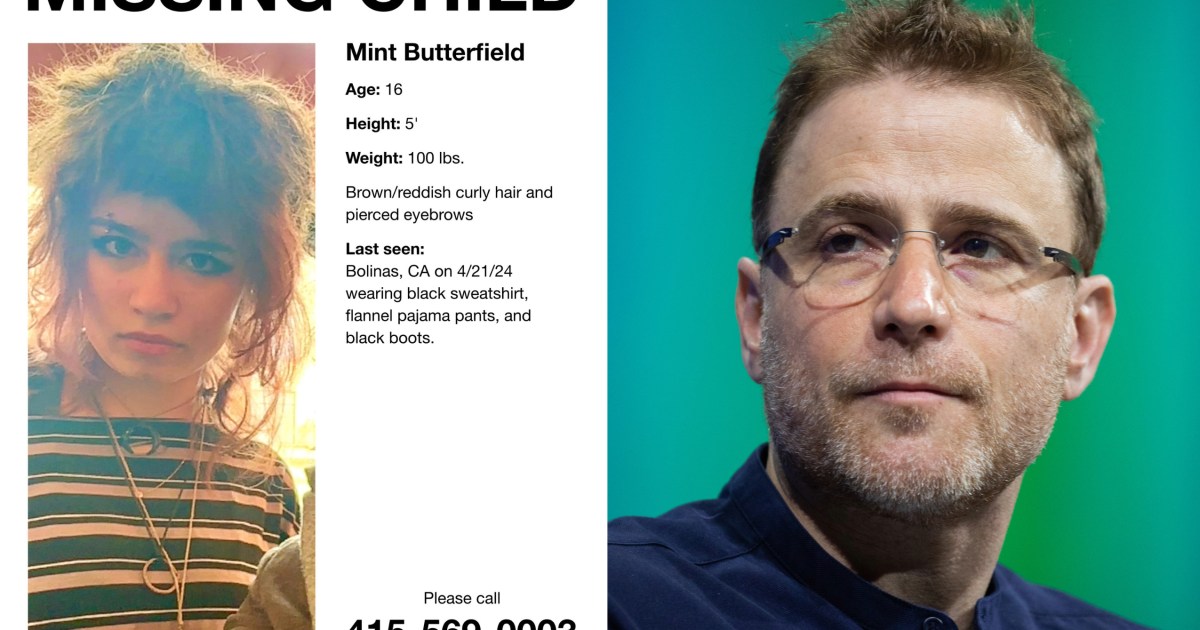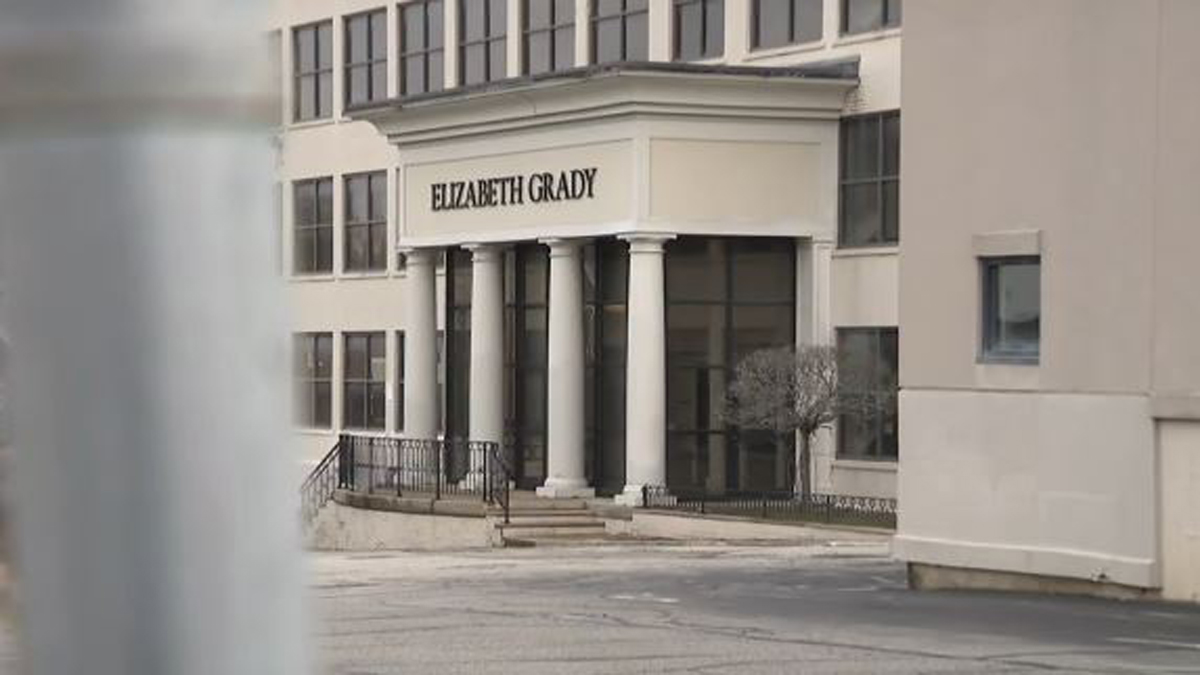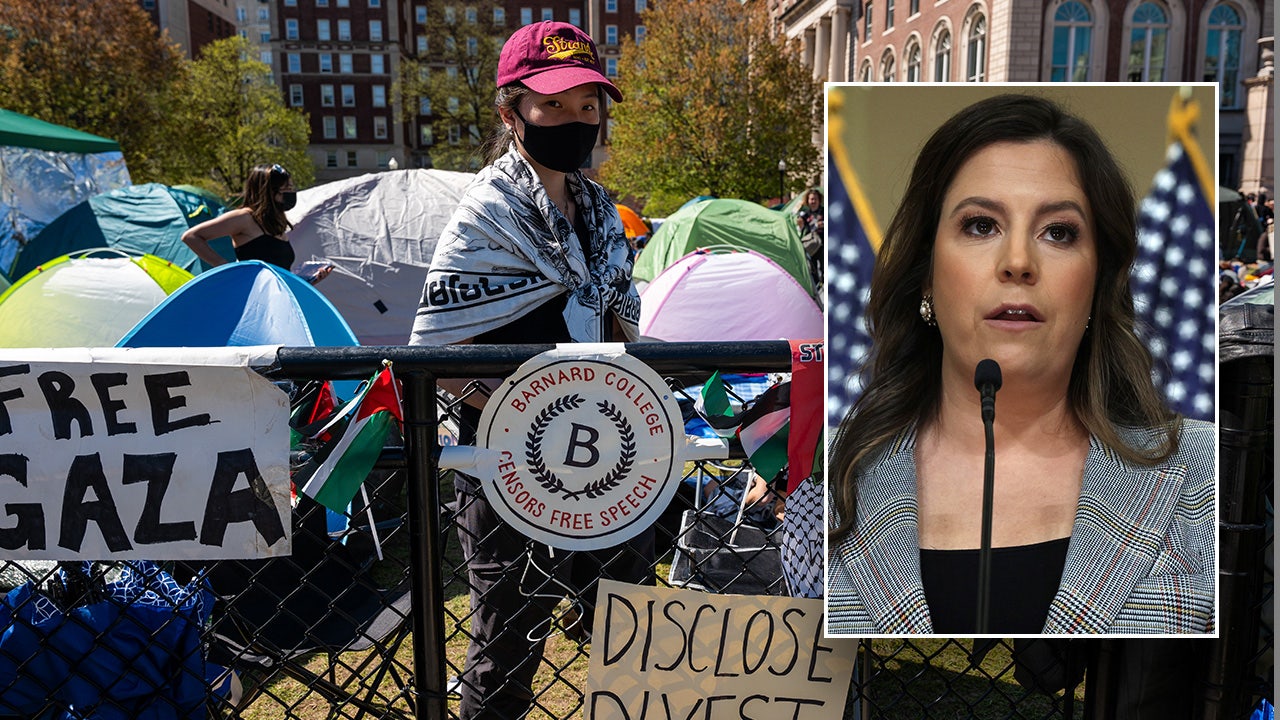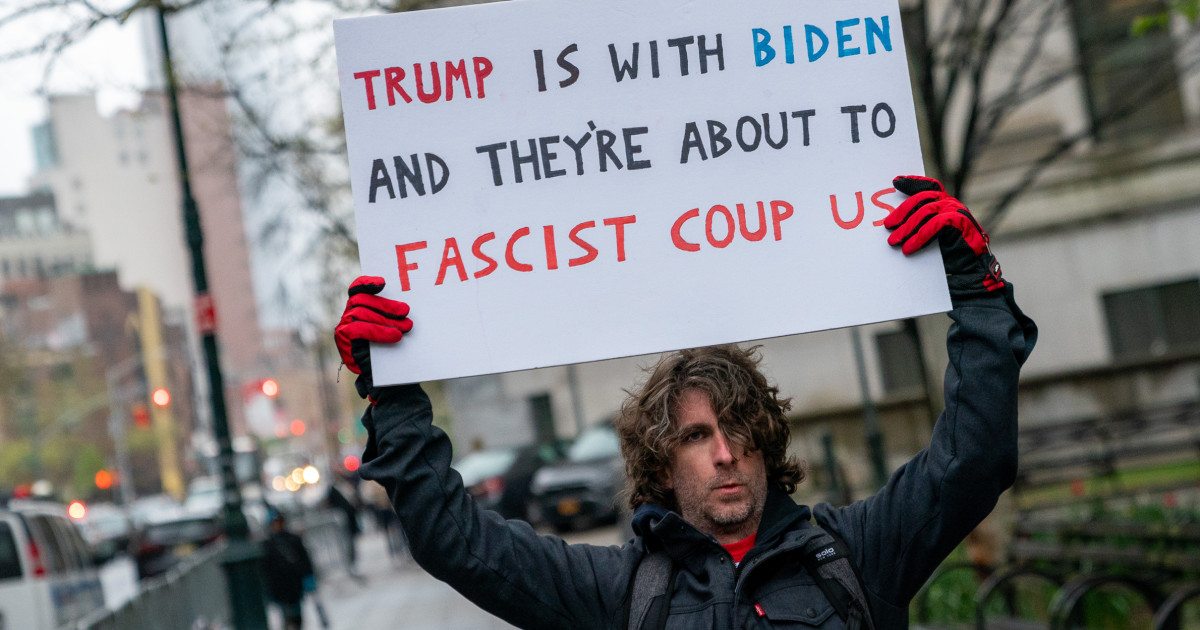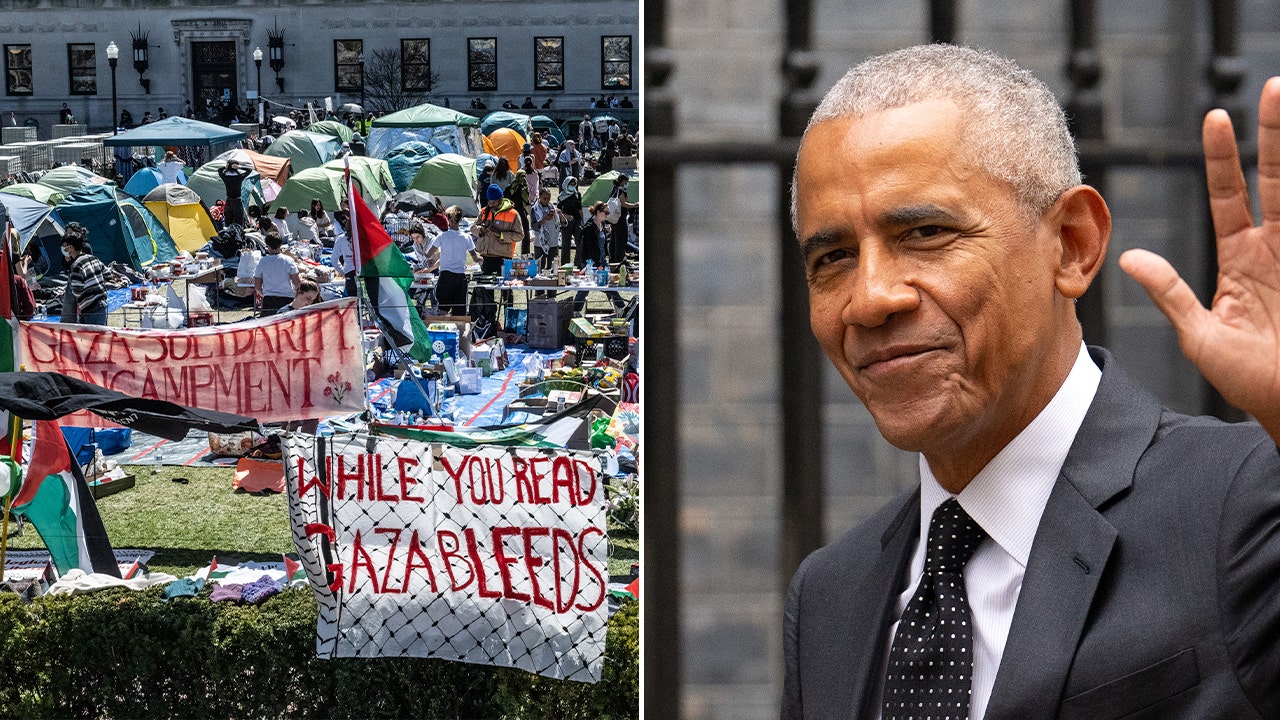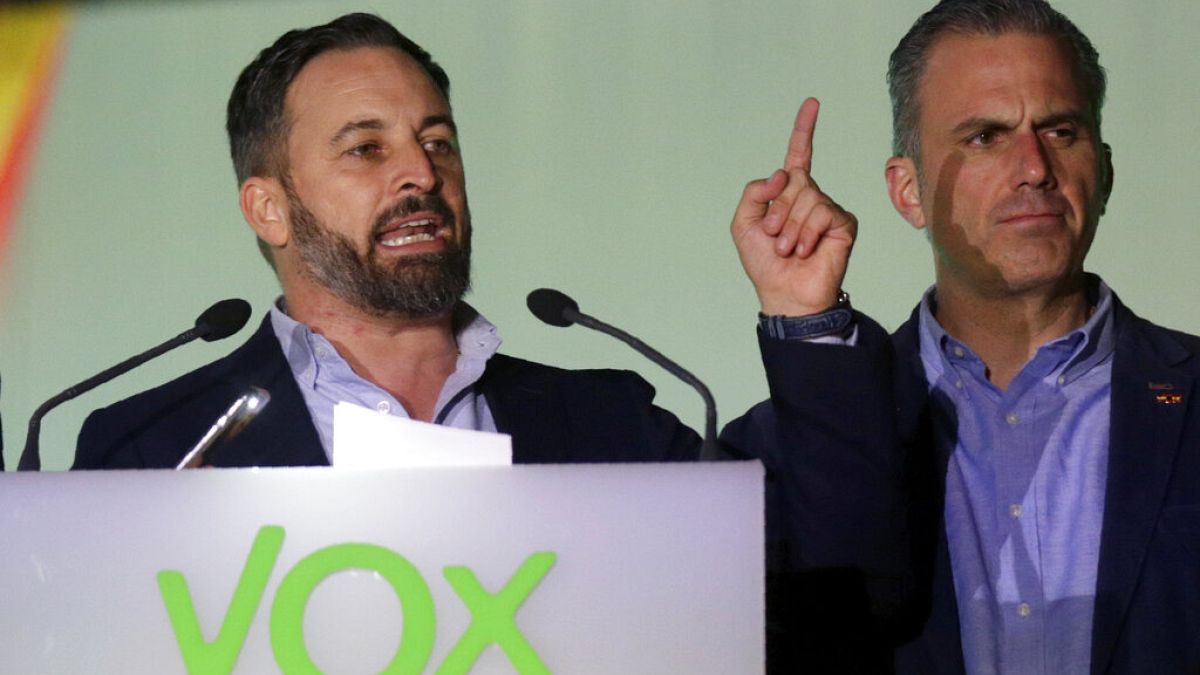Seattle, WA
Seattle Seahawks set date for return of iconic 1990s throwback uniforms
:quality(70)/cloudfront-us-east-1.images.arcpublishing.com/cmg/TBRVGLYQNMBMA4K23MG3X37N6U.jpg)
SEATTLE — The Seattle Seahawks have long hinted at the return of their popular 1990s throwback uniforms for the 2023 season, and now, the team has set a date for fans to pencil into their calendars.
The Seahawks will don their 90s throwbacks in Week 8 against the Cleveland Browns on Sunday, Oct. 29. In that game, the Browns will also wear their own throwback brown, orange, and white uniforms.
The team has not yet announced its plans to make the jerseys available to purchase, but expects to have those details “later this summer.”
This comes on top of a handful of other special home game themes, including a celebration of the 10-year anniversary of the Seahawks’ Super Bowl XLVIII victory on Sept. 24 vs. the Carolina Panthers, and Pride night as part of Aug. 10′s preseason tilt against the Minnesota Vikings.
You can head here for more details on tickets to all the Seahawks’ theme nights coming up this season.
©2023 Cox Media Group

Seattle, WA
Officials concerned by surge in abandoned building fires in Seattle

Seattle Fire Dept. concerned by surge in vacant building fires
Alarmed by the growing number of fires at abandoned properties, Seattle Fire Chief Harold Scoggins is supporting a new strong-armed solution that cracks down on private property owners in favor of public safety.
SEATTLE – Alarmed by the growing number of fires at abandoned properties, Seattle Fire Chief Harold Scoggins is supporting a new strong-armed solution that cracks down on private property owners in favor of public safety.
Seattle Mayor Bruce Harrell is on board, pushing for emergency legislation that would amend the city’s fire code to order and complete demolition of unsafe buildings.
“We’re still watching the rise in these fires,” said Scoggins to the Seattle City Council Tuesday morning. “Clearly to me that says we need to do something different to solve the problem.”
According to Scoggins, in just the first four months of this year, his crews responded to at least 30 different incidents at vacant buildings across the city. The data collected by Seattle Fire over the past three years highlights what Scoggins calls an escalating hazard. Back in 2021, crews were sent out 70 times to extinguish fires at derelict properties. In 2022, about 20 more. By 2023, the number had jumped to a staggering 130.
The issue isn’t unique to Seattle, as evidenced by a recent fire in Tukwila, where a vacant property became engulfed in flames.
“This is a building that has had previous fires in it,” explained Pat Pawlek with Puget Sound Regional Fire Authority. According to Pawlek, homeless people were scrambling out when crews arrived.
The City of Seattle has highlighted at least 100 blighted properties in desperate need of a tear down.
“[The] last thing that I would want is any of our firefighters or community member to be harmed when we could have taken a very intentional step to solve the problem,” stressed Scoggins.
IT is a regional problem, now with a local fix. The emergency legislation, backed by the mayor, would allow for the demolition of hazardous properties, with the costs passed back to the owners if they fail to comply.
“If we can’t gain compliance, we shouldn’t leave these properties to be open-accessed,” pointed out Scoggins.
MORE FROM FOX 13 SEATTLE:
Tesla driver hit, killed motorcyclist in Snohomish County while using autopilot: docs
2 WA beaches named among 25 best in US by Travel and Leisure
WA launches $45M program to make EVs more affordable
AMBER Alert canceled: Washington 1-year-old found safe after pursuit in Oregon
To get the best local news, weather and sports in Seattle for free, sign up for the daily FOX 13 Seattle newsletter.
Council has until mid-May to mull the mayor’s proposal over. Both Councilmembers Tammy Morales and Bob Kettle are in support.
Seattle, WA
Seattle’s troubled past and present suggest a new approach to mental health

E
dward Moore, a 32-year-old sailor, was discovered, near freezing and living in a tattered tent on the shore near current day Seattle in 1854. At the time, Washington was still a territory and Seattle was a misty settlement of log cabins and wood-framed homes at the edge of the known world.
“He’d been living in his makeshift tent for months, living off raw shellfish he foraged and being cared for after a fashion by the Coast Salish people who lived nearby,” explained Josephine Ensign, a University of Washington nursing professor, and the author of “Skid Road,” which documents the history of homelessness in Seattle.
“He most likely had PTSD from a really, really bad shipwreck and maybe also potentially some traumas from his childhood back in Massachusetts,” Ensign said. “It does seem like he had schizophrenia or some type of psychosis.”
After having several of his frost-bitten toes amputated with an axe, Moore was taken to a doctor at Fort Steilacoom, which would later become Western State Hospital.
But when the bill came due for Moore’s care, Washington lawmakers balked. They didn’t want to set a precedent that would require the territory to care for the growing number of poor and ill sailors who were ending up on its rugged shores.
They decided Moore’s care was the responsibility of the county, not the territory, and shipped him back to Seattle by canoe. After he returned, Seattleites decided the best thing to do was to send Moore back to Massachusetts.
“Townspeople took a collection to buy him a new pair of clothes, paid a ship’s captain, and shipped him off,” Ensign said.
Living on the East Coast with his sister and elderly parents, without treatment for his mental illness, Moore didn’t last long.
“The cause of death was hanging,” Ensign said. “And it says, ‘Cause: Insanity.’”
Moore’s story and his death carry disturbing parallels to current-day treatment of mental illness and may also contain a message about how the region could better manage both mental illness and homelessness in the years to come. At the core of this message is the ability, or in most cases, inability, to see mental illness from the perspective of those who suffer from it.
RELATED: Vulnerable patients caught in ‘churn’ between Washington mental health care systems face life and death circumstances
Many of the gaps in mental health care stem from the assumptions made about the capacity of people to cope with day to day activities once they are “cured.”
“We have sort of the crisis management of the inpatient unit and then the outpatient treatment, which assumes that you can manage all areas of your life,” said Katherine Jonas, who researches psychosis at Stony Brook University in New York. “You can get yourself to an outpatient clinic. You can fill the prescription and remember to take them. And then there’s nothing in between.”

L
ew Middleton lived in a state of turmoil for years because he heard and obeyed the many voices in his head. The voices drove Middleton into the forests of Washington state, where he lived while they reinforced his delusions.
“What I noticed was the more I collectively listened to them and the more I thought about maybe people chasing me, the more it became people chasing me,” he said.
One night, Middleton ran into an ex-girlfriend. He showed her the bite marks he had on his arm from a fight he’d been in, and she convinced him to go to the hospital, where he was admitted to Harborview Medical Center, one of the only hospitals in the Seattle area with a specific unit for psychiatric emergencies.
Middleton thought he’d been abducted and the anti-psychotic medicine he was prescribed was poison. But he took it and he began to notice a change.
“The voices didn’t go away completely,” he said. “It just kind of brought it down to the point of where they weren’t so loud.”
RELATED: 50 years ago, many psychiatric hospitals closed. Did that cause today’s mental health crisis?
The antipsychotics that Middleton was prescribed in the 1990s hadn’t changed much since they came out in the 1950s and there have been few game-changing breakthroughs in those medications in the 30 years since.
“I work toward de-prescribing because people come out of the hospital with tons of medications, over-prescribed, really just kind of shells of people when they come out,” explained Alix Van Hollebeke, the head of nursing at Seattle’s Downtown Emergency Center, a nonprofit near Harborview that provides shelter, housing, and medical care to people with complex cases of mental illness and substance abuse.
“We want to get to the point where they get to live their life, even if it’s weird and different and we don’t understand what it’s like, but they get to live their life as they want to live it. With maybe a little bit more sparkle than the rest of us,” Van Hollebeke said.
While the antipsychotics helped lower the voices Middleton heard, they did not silence those voices. They also caused side effects such as facial tics and other involuntary movements. Other meds seemed to make the voices louder.
His mom worried he’d wind up dead. But getting him committed was nearly impossible
But the treatment and care gave Middleton the ability to separate from the voices and helped him understand they were a part of him that he could reason with and learn to live with.
“It’s almost like I was playing this role like, almost like a movie, a role where I was believing everything that was going on and as soon as I tested it, the reality came through,” Middleton said. “There was nobody out there chasing me.”
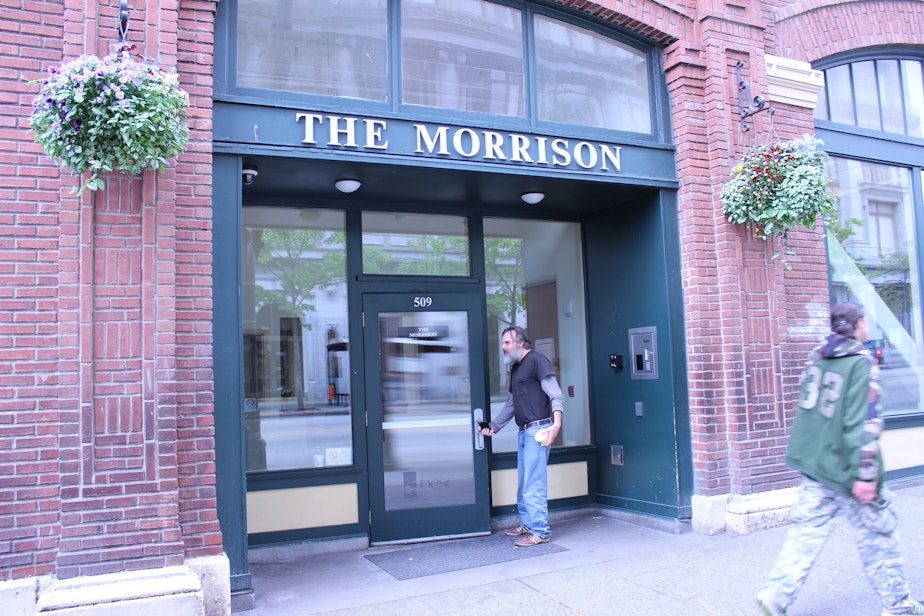
Middleton went on to work at the Downtown Emergency Center and became the longest served certified peer counselor in Washington state history. The center now has a drop-in center named after him.
While some people who suffer from mental illness are able to gain stability through a combination of care and recovery, others require ongoing care that is difficult to find in the current mental health system.
D
onald is a psychiatrist who dealt for years with his son Eli going through “the churn,” spending time in psychiatric hospitals, emergency rooms, living on the street, and seeking relief through alcohol and drugs.
Donald and his wife, who asked that their last name not be used to protect his son’s identity, reached a critical moment when their son was about to be arrested and he turned to his parents and asked, with a look of terror in his eyes, “Please, can’t I stay with you?”
RELATED: A boy named Adam: When psychosis spills onto Seattle streets
They could not turn him down. Donald and his wife now provide their son with 24-hour care. Their lives revolve around Eli’s daily needs for routine and consistency.
They avoid sarcasm and innuendo, which they have found lend to Eli’s paranoia and can erupt into psychosis.
“How do I help him mitigate the terror he’s experiencing?” Donald asked. “The terror is terror, whether it’s internally induced or whether it’s externally induced, it’s terror. And it’s in the eyes, his eyes.”

The process of living with Eli made Donald recognize aspects of mental health care that potentially contributed to psychosis and delusion, rather than offering relief and stability. For example, not being able to sleep in a hospital because a roommate is yelling, or being overdosed on medications, then released without assistance and suffering a fall.
At the core of this frustration with his own field of psychiatry was the mistaken attitude he described as “doctors know best.” Donald did not see a genuine curiosity about the way people in psychosis were experiencing the world. He realized that mental health care, as with the “care” offered to Edward Moore on the shores of Seattle 170 years ago, was based not on the needs of the people who are sick, but on what is expedient for the rest of us.
“The quickest way is to do what we’ve done for centuries, which is to lock people away unseen and to make people invisible and less disruptive so that’s what we do,” he said.
RELATED: Who was Lillian Massey? A journey to Northern State psychiatric hospital
One of the things that offers Donald hope is the compassion he sees in his son Eli when he encounters other people in mental distress. The first thing he thinks of when he sees someone in pain is not how he can change or fix them.
“Most people, if they can calm their minds down, and that takes time, it’ll be the same for them, all of us,” Donald said. “It doesn’t take a lot of know-how to offer somebody or ask them a question. What can I do to help you?”
To listen to the full episode of “Lost Patients,” tap the link above.
Looking for mental health resources? KUOW compiled an “Acute mental health resource guide” that can help.
Seattle, WA
Amazon in Seattle: The Role of Business in Causing and Solving a Housing Crisis

BRIAN KENNY: When the Klondike Gold Rush swept the nation in 1896, the tiny lumber town of Seattle became a bustling city almost overnight. On the heels of the Gold Rush came a shipbuilding boom, followed by a post-war bust and the great depression. Then Boeing to the rescue, as Seattle became the epicenter of aircraft manufacturing for the US forces in World War II. Decades later, Boeing passed the baton to Microsoft, and Seattle found itself at center stage for the burgeoning tech boom. In the ensuing years, Seattle would become the launch pad for other global brands like Starbucks and Nordstrom’s. But the biggest by far is Amazon. Since launching in 1994, Amazon has invested four and a half billion dollars in the city where it currently employs 55,000 people.Most cities would love to have an Amazon in their midst, but as the Gold Rush taught us all those years ago, not all the glitters is gold. Today on Cold Call, we welcome professors Paul Healy and Debora Spar to discuss their case, “Hitting Home, Amazon and Mary’s Place.” I’m your host, Brian Kenny, and this is Cold Call on the HBR podcast network. Paul Healy’s research covers a range of topics including white-collar crime, governance, business ethics, and financial analysis. Debora Spar studies issues of gender and technology and the interplay between technological change and broader social structures. Welcome both. It’s great to have both of you here.
DEBORA SPAR: It’s a great pleasure. Thanks.
PAUL HEALY: Thank you, Brian.
BRIAN KENNY: And Paul, thank you for joining us from Barcelona. This is good of you to give us your time. Paul, I’m going to ask you to kick us off here by telling us what the central issue is in the case and what your cold call will be. I know you haven’t taught the case yet, but when you have an opportunity to teach it in class, how are you thinking of starting the conversation?
PAUL HEALY: So, my interest in the case was exposing our students to the question of homelessness in the country and around this question of equity that you raised. My sense is that most of our students haven’t spent a lot of time thinking about it. And so, I thought that a case like this will be a great way for them to start to think about what their responsibilities are, how do companies they work for, what are their responsibilities and really how do we as a society address this problem, this homelessness that seems to be so intractable in the United States.
So, what would I ask? I think I might start actually by asking students, does anyone know someone who has been homeless at some point in their life? And then I think I would really want to start by digging into this question, why is homelessness such an intractable problem in the United States? And get the students to start thinking about that question, what causes it? Why is it we don’t seem to be able to get our hands around solving it?
BRIAN KENNY: Deb, let me turn to you for a moment and ask, you and Paul wrote this case together. I’m wondering why did you decide to write it? Why was it important to you to pick up this topic?
DEBORA SPAR: Well, it’s so interesting now because we wrote it a couple of years ago and right around the same time, Paul and I were also working together on what has become a new required course in the first year curriculum on the social purpose of the firm. What that course is really about is probing the boundaries between the firm and the state. So, what is the appropriate role of the firm in society and what kind of assets do firms bring to attack societal problems, and what is the appropriate role of the state? And I think this case even more so than I would’ve imagined at the beginning, it hits that nail right on the head because I think my opening question would be something, and I would probably frame it more cynically than Paul because he’s a less cynical person than I am. I would probably ask something like, “Why in heaven’s name is Amazon working on homelessness?” Which historically has been an issue that communities worried about and churches worried about and governments worried about. But you don’t think of a delivery company being involved in homelessness. So, I think it really blows open this issue of: what should firms be doing and how should we as citizens and consumers, how should we think about a company like Amazon when it gets involved in a problem like homelessness?
BRIAN KENNY: Paul, you talked about the intractability of homelessness in the United States, and I’m wondering if you can just give us a little bit more of view into what that situation looks like. We have by far the largest economy in the world. It would seem that we shouldn’t have anybody who’s homeless, but we do. We have a lot of homeless. Can you talk a little bit about that?
PAUL HEALY: So just as a bit of context here, Seattle has the third most homeless people in the country behind Los Angeles, and it’s a much smaller city, obviously. And if you look at the people that are homeless, a substantial portion of them are families with children. So, why does it happen? Well, I think that we don’t have much of a social safety net in the United States. It’s just not part of our norm, our infrastructure. And then I think there’s a lot of things that sort of go into making it the perfect storm. We deregulated mental health many years ago and we said we were going to do so, and we were going to provide support services for the people with mental health problems. And we really never did.
In large cities, the cost of housing has really exploded as companies like Amazon, and I’m not blaming Amazon, but one consequence of the tech boom and the boom in cities is that the price of housing in large cities has really escalated dramatically. And that’s really priced out a lot of low-income people. And then on top of that, I think that we haven’t had the willingness–people living in inner cities–to really change zoning laws to lead to more housing and the building, creation of more housing and low-income housing or just regular housing in cities and suburbs. And then I think that the last piece is also important, and that is that people who are homeless really don’t have a political voice. They’re not the sort of people with political power. And so, their problems get largely sidelined unless, somehow they become more mainstream.
BRIAN KENNY: But what role should government be playing? Shouldn’t they be more involved in this situation?
DEBORA SPAR: Homelessness is a particularly complicated problem. It’s a problem of health, it’s a problem of real estate, it’s a problem of policing. It’s a problem sadly, of drug over usage. And for sure one would like government to be a big part of it as it is in many other countries in Europe, not that they’re wonderful places, but you tend to have more low-income housing that’s heavily subsidized. But it’s not clear that government alone can solve the problem. But apologies if this is jumping ahead a little bit, in order for government to solve the problem, part of what they have to do is change zoning laws, which are running into the societal issues that Paul was talking about. But part of what they have to do is raise taxes or they have to generate the revenue because building housing and building social services is expensive. And I think that’s, again, one of these complicated ironies in the case is that on the one hand, Amazon and some of the other companies are stepping up to the plate to give a lot of charitable monies to address homelessness, but they’re fighting against the taxes which would enable the government to address homelessness. There are no magic wands here. The government is going to have to have money in order to address the problem.
BRIAN KENNY: Yeah, and we’re going to talk about that, how they’re using their leverage in ways that would benefit them. But at the same time, there’s a lot of irony in the whole story. Amazon has transformed Seattle, obviously I alluded to that in the introduction in ways good and bad. And I remember a few years ago they had a sweepstakes where they were going to open up a new headquarters in the US and they had mayors all over the United States clamoring to have Amazon located there. What would you tell a mayor who was thinking about having Amazon relocate to their city?
DEBORA SPAR: Well, ironically, one of my friends was the deputy mayor and was deeply involved in this. And even while she was going through it, I mean it is this double-edged sword because if you’re a mayor, if you’re a community leader, you kind of have to want this investment because it brings… I forget how many tens of thousands of jobs, it’s going to drive up property values and it’s going to bring more espresso bars to a community. By the same token, it is going to make the cost of living in these cities way more expensive, exactly has happened in the case of Seattle. It’s going to increase traffic congestion, it’s going to increase demand for the public schools. So, it’s one of these birds, if you catch it, you’re then left with a lot of problems. But nevertheless, as we saw every mayor in the country was racing after that.
BRIAN KENNY: Sure. Of course. Paul, talk a little bit more about Seattle. I’m wondering what the economics are of living in the city of Seattle. What do you need to earn?
PAUL HEALY: I’m not sure exactly what you need to earn, Brian, but I know it’s a lot more than the minimum wage. And I think the average Amazon worker is earning $110,000 a year, and the average other worker is earning more like $55,000 a year, which by US standards that’s probably enough to get by or just get by in a city like Seattle or if you’ve got a family, it may not be enough to get by. There are certainly plenty of people who aren’t making that, and for them, that’s going to make it very difficult to rent a home or rent an apartment in Seattle.
BRIAN KENNY: So, did Amazon see themselves in any way as being the cause of the problem here? Did they come to the table, I guess willingly or were they kind of pushed into this role? What’s the dynamic there?
DEBORA SPAR: Well, I think my sense, and Paul may have a different one, but I think it’s very human. People rarely see themselves as causing problems, particularly when there are problems that are multifactorial. Nobody caused, no single entity caused the problem of homelessness. It was a failure or complications on so many levels. So, I don’t think Amazon saw themselves in any way as the cause, I think they did see themselves and to their credit as being part of the solution, but the solution they chose was a charitable one rather than a… How should we call it, a governmental or a contribution to society-based one. But I don’t know, Paul may have a different sense of that.
PAUL HEALY: I think that also, Deb, picking up on that, oftentimes companies, and I suspect… I don’t know for sure, but I suspect that many people in Amazon would say to themselves that the government actually hasn’t proved that they can solve this problem. And the government’s not proven to be very effective in solving this problem. And we need the private sector to provide a little bit of support and to help do it. And I think that they’re probably learning over time that it’s a much more intractable problem than they had thought and that they’re no more effective at doing it than the government.
DEBORA SPAR: And if I could, I want to go back to the example that Paul raised earlier about what’s happened to Whole Foods in San Francisco because I think it touches on a broader problem. And we saw this recently at an event we held in Latin America, where for many decades the wealthy industrialists in Latin America and elsewhere have said issues like economic inequality, they’re not our issue. Our job as business people is to generate growth, generate jobs, and the government takes care of redistribution. But that view in Latin America, and I suspect in Seattle and San Francisco, is starting to change because when the problems of inequity become so severe that you’re closing your stores and your employees don’t want to come to work, it becomes part of not even the responsibility of the corporation, but it becomes part of its business. And again, I think that’s what this case… All good cases are a bit extreme examples of a problem. I think Seattle and San Francisco are the extreme examples of a broader problem we’re seeing.
PAUL HEALY: And I think on top of that, I think you are also seeing employees of many companies saying, “We’re not happy, we’re not comfortable. This isn’t the community we want to be part of.” And so, that puts more pressure on the company to say, “Well, how do we fix this problem? How do we make this better?” Because we want to attract the best people. And if we’re now no longer as an attractive location because of homelessness in our community, we need to fix that or at least be seen as contributing to fixing it.
BRIAN KENNY: So, what was Amazon’s way to fix this? We haven’t talked about Mary’s Place. That’s obviously a central part of the story as well. What is Mary’s Place and how has Amazon engaged with them?
DEBORA SPAR: Well, Mary’s Place is a wonderful, fairly traditional example of a nonprofit approach to a social problem. So, Mary’s Place was started by a woman who had experienced poverty and homelessness in her youth and had wanted to address that for other people. And so, it’s a classic kind of church-basement-based nonprofit that from everything we know has done a great job, has built hundreds of beds and taken care of hundreds of people, primarily women and children. And so, they were a great partner for a company like Amazon that wanted to do good. And it gave Amazon the ability, not initially to build a homeless shelter themselves, that’s not their business, but to support an organization that was already in that business. So, pretty straightforward in that regard.
BRIAN KENNY: Okay. So how are they working together? I guess, I’m trying to get a more vivid picture of how involved is Amazon in the day-to-day operations of Mary’s Place.
PAUL HEALY: So, Amazon doesn’t get involved in the day-to-day. But what Amazon did was it built a homeless facility that Mary’s Place operates and they built it within its campus. So, it’s not part of the corporate headquarter building, but it’s within the campus. You build a homeless shelter that Mary’s Place operates for a hundred people or something like that, a couple hundred people.
BRIAN KENNY: So, that’s an interesting approach though. Why would they choose to build it right in their midst?
PAUL HEALY: I don’t know the answer to that to be quite honest, but I think it does demonstrate their commitment and it makes it more visible to people that they’re doing something.
DEBORA SPAR: And I think that’s exactly right. And I think also, even though Amazon is not in the social services business, they’re kind of in the real estate business and they were building, they had some additional space. It was probably… We don’t have the numbers. It’s probably a little bit more economically efficient if you’re already putting up a building to put up an adjacent building. So, I think it was more than a sort of traditional but a sensible way for them to contribute to what was still a separately operated nonprofit organization.
BRIAN KENNY: And the case, to your point, Paul earlier, the case does mention that employees would like to have that proximity to see this work unfolding in front of them. It makes them feel like the problem is being addressed to some extent. And so, that’s also another benefit for it. Let’s get back to the tax issue that you mentioned earlier, and the ability of a firm like Amazon to influence policy. We know that firms are doing this all the time. They’ve got lobbyists, there’s always a presence at the federal, state and probably local levels by these firms. Can you describe a little bit about the dynamic with the tax situation in Seattle?
DEBORA SPAR: Yeah, so I mean it’s a fairly classic case of what happens in civic arguments. So very few companies ever want to pay more taxes. It’s just not part of the rule book. And governments tend to want to tax corporations because they need and want the revenue. And particularly in a place like Seattle, where you’ve had this influx of not only very wealthy corporations, but very visible, very well-known corporations, it’s hard to imagine any city government not wanting to get more money from these corporations. And it’s not hard to imagine corporations like Amazon not wanting to pay it.
But I think what the case tries to tease out without calling anyone villainous in this story, because I don’t think anybody is, is that there is an irony that Amazon is anxious to spend the same money on philanthropy, that they’re fighting tooth and nail not to pay in taxes. Now maybe they’re making a conscious, explicit decision that we trust the nonprofit provider more than we trust the city government. And that may be a valid decision. It’s also one that I think we as citizens should be worried about. Because we do have a system that’s set up for governments to provide social services. And if we’re going to choose a model that’s instead a combination of for-profits and nonprofits, it’s a very different model that I’m not sure we as a country have sort of bought into.
BRIAN KENNY: Yeah, yeah. Could they apply the same kind of leverage though to the tax situation? Could they redirect that energy into saying, “Hey, we want to change the housing policy? What can we do to work together?”
DEBORA SPAR: I think they probably could. And I think the case touches a little bit that some of the other companies in the area, particularly Microsoft, seem to have been playing that route, actually trying to work with the government to help raise taxes and to build better kind of housing. But again, there’s no perfect solution here.
BRIAN KENNY: Right, right. We’ve talked a lot about Amazon. We haven’t talked specifically about Jeff Bezos, but the case does mention Jeff Bezos and the way that he started to engage in this. Paul, can you describe that a little bit?
PAUL HEALY: We wrote this as a field case, so I don’t have any deep insight as to what Jeff Bezos was thinking about this, but I’m sure given his centrality to the company that he was involved in both the lobbying of the town government, the local government to avoid the taxes, but also seeing this perhaps as a way of trying to solve the problem. So, I am sure his fingerprints are on that.
DEBORA SPAR: And this too, and again, repeating Paul, we don’t know anything about Jeff’s personal motives here, but if you look at it from the sort of macro level as I tend to do, I think this is an issue that deserves attention because where we are in society right now is that we kind of seem to think it’s okay for people like Bezos and name your other favorite billionaire to generate billions and billions of dollars and then give it away in philanthropy, which of course is fun, right? And you get to be a hero, you make all that money and Bezos has to give away all… Nobody can spend as much money as he has, but that’s a very different model than the one we had perhaps in the 1950s where companies paid more in taxes, the CEOs made less and they did less philanthropy. So, I’m a little worried about this sort of hero model rather than the civic engagement model.
BRIAN KENNY: Yeah. That makes a lot of sense. So, I’m wondering, just in all the work that you’ve done, Deb, looking at firms and the role of firms in society, is there a model that makes the most sense where it comes to this? So, is it somewhere in between the Amazon model and maybe the Microsoft model?
DEBORA SPAR: Yeah. If I dare to be optimistic, I think the US is moving a little bit more towards a model of, perhaps out of fear, that companies, including Silicon Valley companies, that 20 years ago just wanted government to go away are now saying, “No, we actually need a working government.” Forget whether it’s Republican or democratic, we need a functioning government. We need government to take care of homeless people. We need government to educate children and we need government to build roads. And what we’re hearing in our other work dealing with alumni and other business leaders is increased sense of, yes, we need government to work, and what can we do as business people? Again, not to support a particular party or particular candidates, to just make sure that we have good people in government and that government, particularly at the local level, that we can start to build local coalitions to focus on these apolitical, social structures. Think of it as infrastructure, both social infrastructure and physical infrastructure. We need those things to work.
BRIAN KENNY: Right. The commons as we’ve talked-
DEBORA SPAR: Exactly.
BRIAN KENNY: About here quite a bit.
DEBORA SPAR: We need the commons to work.
PAUL HEALY: And I would add on top of that, that one of the nice things about having local governments start to work on these problems is that you allow much more innovation to take place. Rather than having one idea of being tried across the country, you can allow multiple ideas to look to work on these problems and see which ones actually start to make a difference.
BRIAN KENNY: Yeah. Paul, the case does talk about the public reaction to this and frankly the cynicism. And we know that there are a lot of cynics out there, particularly questioning the motivation of a firm like Amazon and why would they do this? And to your point earlier, Deb, about isn’t the business of business to make money. So, what would you say to somebody who’s cynical about Amazon’s efforts here?
PAUL HEALY: So, I would say that you should keep encouraging Amazon to try to play a positive role in addressing this problem. That in fact, the problem’s not going to go away if we don’t all play our part and Amazon is going to have to play a part, but it’s not just Amazon. There is going to need to be support and work at the government level. Nonprofit organizations are going to have to be involved. And I think that especially for something like homelessness, we individuals who like our local environment and don’t want to change it are going to have to decide that we’re willing to give up our quarter-acre section with plenty of space around us and have a little bit more congestion in inner cities or closer to the cities to make sure that we have more availability of housing and that people can afford to buy housing at a regional or rent housing at a reasonable rate. Amazon’s not going to be able to solve the problem. So, I think you need all the constituents to decide that it’s an important problem and be willing to make some sacrifices to do it.
BRIAN KENNY: Yeah. And I think Amazon’s sort of self-awareness now that they’ve engaged in this and they see just how difficult it is, throwing money at the situation probably is never going to be the right solution.
DEBORA SPAR: And my sense… And this is literally only from reading the newspapers, but my sense is as they’re now building their second headquarters in Arlington, Virginia, that they have gone into it with more of a capacious sense of working with the local community, the school boards, to try and address the problem, bringing in all of these players rather than letting the problem evolve to a point where they sort of have to get pulled in a more of a savior role.
BRIAN KENNY:
Right.
PAUL HEALY: Yeah. And there’s an organization that was started a few years ago called We Are In, which is a conglomeration of Amazon, the Gates Foundation, Microsoft, many of the big players in Seattle. And they were willing to commit a lot of money to help homelessness, but it collapsed. So, I think there’s a sort of humility that comes from having tried this and realizing it is actually a very difficult problem and it’s going to need everyone to really be involved to make a difference.
BRIAN KENNY: I’ve got one question left and I’ll ask the same question of each of you, and maybe I can ask you to start, Deb. What lessons can business leaders learn from Amazon’s approach to this problem?
DEBORA SPAR: There’s a bunch of lessons here, but I think it is that in lessons, unless business… And particularly high profile businesses, unless they see part of their responsibility as being an engagement, a healthy engagement with their communities, it’s going to wind up biting them. And so, they need to think about their role in the community, which historically has been what business has done. They need to think about that civic role from the outset rather than waiting until the problems emerge.
BRIAN KENNY: Paul, what do you think? What can business leaders learn from the case?
PAUL HEALY: A couple of lessons. One is you can applaud Amazon if you’re a business leader for being aware of the problem. Because I think a lot of companies don’t even see the problem. And I think you can give Amazon some credit for trying to address it and recognizing that they do feel that they’ve got a civic responsibility here, which I think a lot of companies don’t think about enough. So, I think there’s a lesson there for companies to start thinking about if Amazon cares about this, should we be thinking about it? And then the third would be perhaps a sense of humility. Amazon hasn’t been able to solve this problem. It’s solved a lot of the problems, and it’s been able to do pretty remarkable things. It hasn’t solved this problem, and which just goes to demonstrate the problem’s intractability, and a level of humility for companies in these sorts of situations I think is worth noting.
BRIAN KENNY: Yeah. Debora Spar, Paul Healy, thank you for joining me on Cold Call.
DEBORA SPAR: Thank you, Brian.
PAUL HEALY: Thank you.
BRIAN KENNY: If you enjoy Cold Call, you might like our other podcasts, After Hours, Climate Rising, Deep Purpose, IdeaCast, Managing the Future of Work, Skydeck, and Women at Work. Find them on Apple, Spotify, or wherever you listen, and if you could take a minute to rate and review us, we’d be grateful. If you have any suggestions or just want to say hello, we want to hear from you. Email us at coldcall@hbs.edu. Thanks again for joining us. I’m your host, Brian Kenny, and you’ve been listening to Cold Call, an official podcast of Harvard Business School and part of the HBR Podcast Network.
-

 News1 week ago
News1 week agoCross-Tabs: April 2024 Times/Siena Poll of Registered Voters Nationwide
-

 Politics1 week ago
Politics1 week agoNine questions about the Trump trial, answered
-

 World6 days ago
World6 days agoIf not Ursula, then who? Seven in the wings for Commission top job
-

 World1 week ago
World1 week agoHungary won't rule out using veto during EU Council presidency
-

 Movie Reviews1 week ago
Movie Reviews1 week agoFilm Review: Season of Terror (1969) by Koji Wakamatsu
-

 World7 days ago
World7 days agoCroatians vote in election pitting the PM against the country’s president
-

 World1 week ago
World1 week agoGroup of EU states should recognise Palestine together, Michel says
-

 Politics6 days ago
Politics6 days agoTrump trial: Jury selection to resume in New York City for 3rd day in former president's trial


